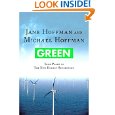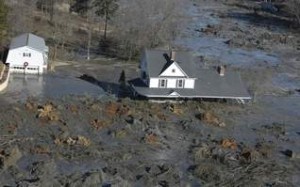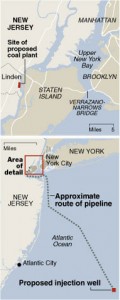Pres Obama has raised the CAFE standards from 27.5 mpg to 35.5 mpg, by 2016. Raising the CAFE standards to 35.5 mpg in 7 (or 26) years is not the change we need. It is very little, and very late. The standard for cars has been 27.5 mpg since 1990 (DieselNet). However, at least we are starting to move forward. Union of Concerned Scientists provides a good summary.
CAFE standards were effective in increasing new car and truck fuel economy by 70 percent between 1975 and 1988. In 2000 alone, CAFE standards saved American consumers $92 billion, reduced oil use by 60 billion gallons of gasoline, and kept 720 million tons of global warming pollution out of our atmosphere.
Dependence on Foreign Oil. American cars, trucks and SUVs account for approximately 40 percent of all U.S. oil consumption. Much of this oil is imported and our foreign oil reliance continues to grow. U.S. consumers currently spend $1 billion every day to import oil and other petroleum products. Achieving 35 mpg by 2020 as directed by the recently passed energy bill will save 1.1 million barrels of oil per day in 2020—over half the oil the U.S. currently imports from the Persian Gulf.
Environment. For every gallon of gasoline that is consumed, approximately 24 pounds of global warming pollution are released into the air. Drilling, refining, and distributing gasoline account for about 5 pounds of global warming pollution per gallon of gasoline, and burning gasoline during vehicle operation produces another 19 pounds of global warming pollution per gallon. Increasing fuel economy standards to 35 mpg by 2020 can cut annual greenhouse gas emissions by 206 metric tons of carbon dioxide equivalent in 2020.
Economy. A fleet of cars and light trucks that reaches 35 mpg will cost about $1,000 to $2,000 extra per vehicle. This additional cost will be more than offset by the fuel savings consumers will enjoy over the life of the vehicle. Consumer fuel savings along with automaker investment to produce a 35 mpg fleet by 2020 will help spur the creation of more than 170,800 new jobs in the year 2020.”
“It’s important to note that all companies will be required to make more efficient and cleaner cars,” said an unnamed EPA official quoted on the “Personal Money Store“. “We do that by proposing individual standards for each class size of vehicle and then a fleet average for each company. This has the effect of preserving consumer choice – you can continue to buy whatever size car you like, all cars get cleaner.”
The Hummer, the Escalade, seat 5 and get 8 miles to the gallon. Even if you double the milage, or triple the mileage, you’re talking 16 to 24 mpg. That’s terrible. There are no logical and compelling reasons to buy, drive, or build these vehicles – which is part of the reason for GM’s decent into bankruptcy.
Aside from the environmental problems; we buy petroleum from Iran, Nigeria, Russia, Saudi Arabia, Veneuzeula, and soon, Iraq. There are profound national security problems associated with this, with petroleum, with a dependence on foreign powers for a resource on which our whole economy is based.
We have the technology. The Toyota Prius gets 50 mpg, and has been available since 2001. The new Honda Insight gets 40 mpg. Bright Automotive has announced a cargo van that will get 100 miles to the gallon, and which will be on the road in 2010.
100 mpg vehicles are the change we need.
The next step would be a Plug-In Hybrid that runs on Bio-Deisel.
One problem is that we all are stuck between the rock of the environmental and national security challenges associated with obtaining a resource from potentially or occasionally hostile foreign powers and the hard place of people like the Heritage Foundation, which has been fighting against the CAFE standards since 1991. Back then they said small cars are unsafe, American car manufacturers don’t know how to build small cars so CAFE would cost jobs, and big cars are our birthright. Today they say government standards don’t work, it will cost more to retool auto plants to build cars people need so we should just keep churning out vehicles that people don’t need and can’t afford, and we have the right to drive trucks (2009). A Heritage Foundation post from 2001 claimed that a) small cars are unsafe, and b) because oil imports have risen the CAFE standards have failed. Oil imports have risen because demand is inelastic and domestic wells have run dry. The Heritage Foundation doesn’t believe in “peak oil” it says the taxpayers should subsidize oil shale. As a taxpayer, I’d rather subsidize solar and wind than oil shale, especially since the subsidies will be lower.
But the fact of the matter is that there are no Jed Clampetts in Louisiana, Oklahoma, or Texas shooting at varmints and hitting gushers. The new “Texas Tea” will be brewed in a solar tea kettle. Or it will be air temperature – and pretty hot.




 According to Kate Galbraith, reporting in the
According to Kate Galbraith, reporting in the 